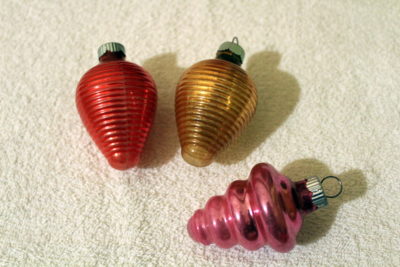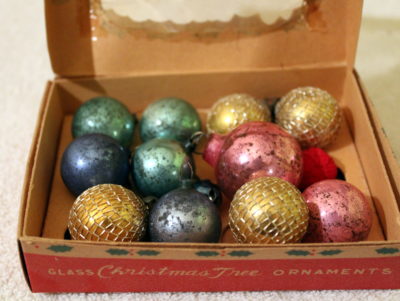
Don’t you just love vintage glass ornaments? In particular, Shiny Brite? The shapes and colors really appeal to me. And, they seem to go with any style of decorations.
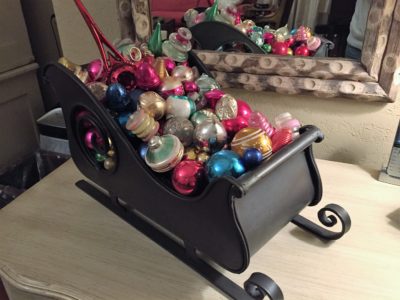
They look just as appealing on a flocked tree, tinsel tree or traditional tree. They even look wonderful heaped into a metal sleigh. Or maybe fill a large glass hurricane or cylinder with Shiny Brite ornaments, and you have a lovely display.
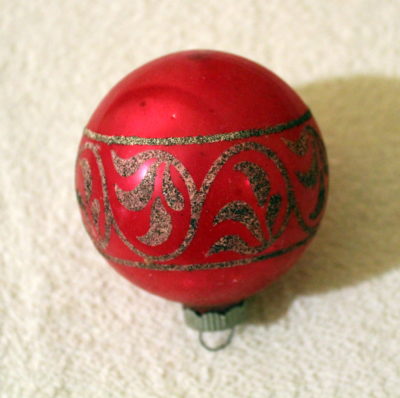
If you inherited these type ornaments, then you need to use them. I have some of my grandmother’s and have purchased more through the years on eBay. I have designated which were eBay purchases and which were my grandmother’s ornaments by tying a red ribbon through the hook and cap of my grandmother’s ornaments.
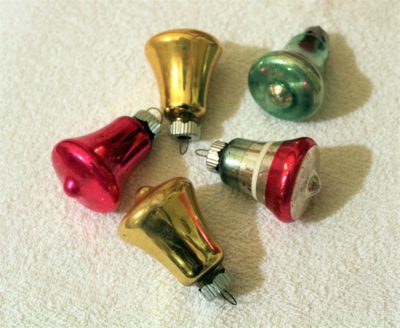
The Shiny Brite company began manufacturing ornaments in the late 1930s and closed in the early 1960s. Corning actually manufactured the ornaments, basing the small glass balls on their light bulbs. Before Shiny Brite, glass ornaments had been imported from Germany. During wartime, Shiny Brite had an even greater appeal since they were made in America.
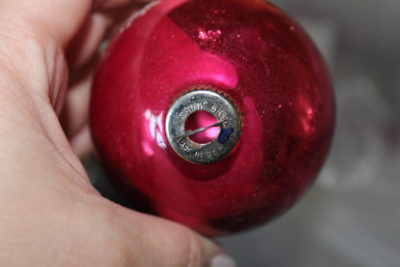
Some of the common decorations on a Shiny Brite ball are stripes (with or without mica snow); stenciled writing, such as Merry Christmas or Peace on Earth; and stenciled scenes such as Santa. Some scenes were hand painted. Common shapes include the traditional ball or round, bell, indented balls or other shapes such as Christmas tree, UFOs, pinecone, swirl, acorn, etc.
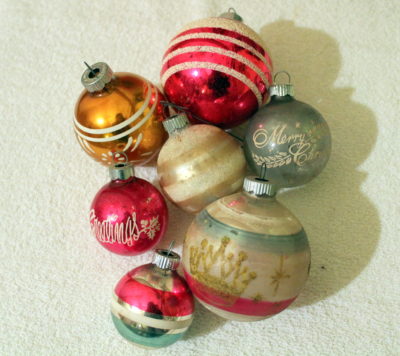
During wartime, when silver was not used for anything deemed nonessential, the ornaments were clear or colored glass without the shiny coating. They were still decorated, but the lack of the Shiny coating helps to date an ornament.
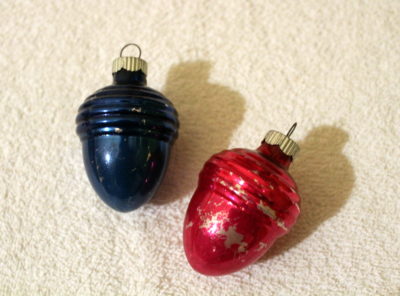
Another way to help date your ornaments are by the caps. Shiny Brite, during wartime, had cardboard caps to replace the metal caps used previously. If your ornament has a metal cap, it may say Shiny Brite, Shiny Brite/Made in USA, or just Made in USA (which could be several brands of ornaments).

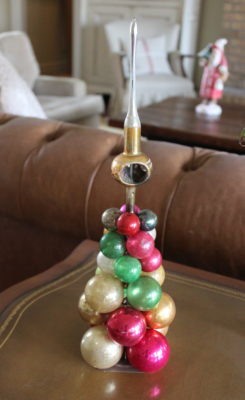
Shiny Brite came in a variety of sizes and colors, as did other glass ornaments. My grandmother had a little tree made of ornaments, which was actually just a metal spike with graduating sized ornaments slid down the spike to form the tree. It isn’t made of Shiny Brite ornaments, but it is really a cute tree!

My grandmother had some old glass ornaments with very small metal caps that have rusted over time. I don’t think they are Shiny Brite, as the caps do not have the look of the other Shiny Brite I have, but the ornaments are just as lovely and well decorated.
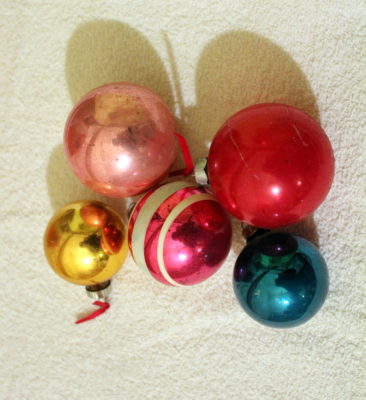
Shiny Brite and other vintage glass ornaments are fragile so you want to store them in a manner which will protect them. I like to keep mine in a divided ornaments storage container from the Container Store. I have always kept that container in the attic, in the part that has foam insulation so it is somewhat temperature controlled. Some of my very special glass ornaments are kept in the house in my Christmas closets (sadly I have three)!
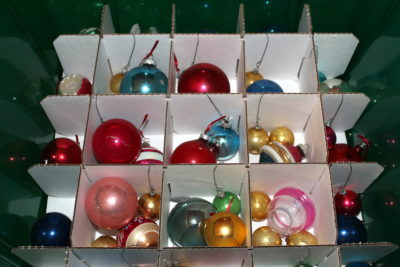
To me, the dividers or tissue paper are very important to protecting the ornaments. I don’t want them to rub against each other, not only to prevent breakage, but also so that the mica or painting is not removed or chipped. However, I must admit that my sister and I have unearthed dirt filled, perfect old glass ornaments in an old small storage shed that was missing half its roof. They are pretty resilient, but I don’t want to chance it!
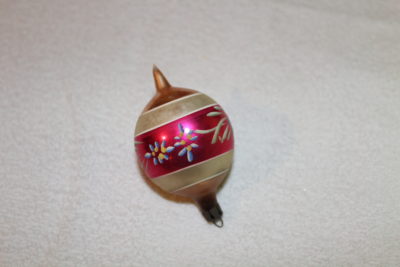
I have never attempted to clean my vintage ornaments because I would be fearful of breaking them or inadvertently removing the decorations. For the undecorated balls, I would think a soft dry or ever so slightly damp cloth lightly run over the surface would be okay, but you would want to test that out on your least favorite ornament first!
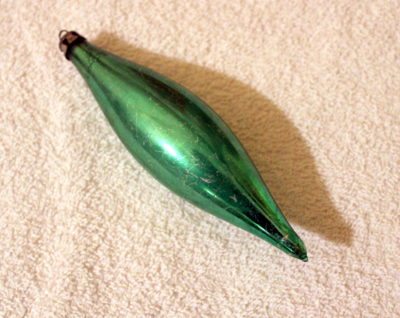
Honestly, I think they are lovely as they are; dirty, dusty, tarnished, and rusted. They may show their age, but it only adds to their beauty.
